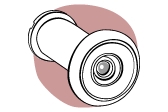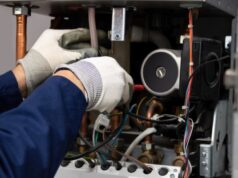
Spy holes, peep holes, door cameras – there are many different types, but they all serve the same purpose; to show you who’s on the other side of the door.

What is a door viewer?
A door viewer, or peephole or spyhole, is a hole in a door which can be peered through to see what’s on the other side without having to open the door. In modern times, it is interpreted as a short barrel, often made of brass or a similar non-corrosive metal which contains a lens at either end. Looking through the door viewer produces a wide, ‘fish eye’ type effect to allow a wider viewing angle.
How do door viewers improve security?
Door viewers allow a person to see what’s going on outside a door without having to run the risk of opening it. This can be useful when talking to strangers, as the risk of them trying to force their way through a partially opened door isn’t there. For best results, make sure that your door viewer isn’t backlit, so you are able to peer out undetected.
Are there any variations?
While a basic door viewer is a simple, low-cost option, it does require your presence at the door. These days, security cameras do a similar job without your having to be at the door watching, thereby reducing the risk even further. Even better, a motion-sensitive camera setup can be used to keep a log of events, which can provide evidence should anything unfortunate occur, and can often provide a deterrent to burglars, even when you’re not at home. Likewise, these kinds of cameras can even be set up to allow you to monitor your front door over the web on your computer, or via a smartphone.




